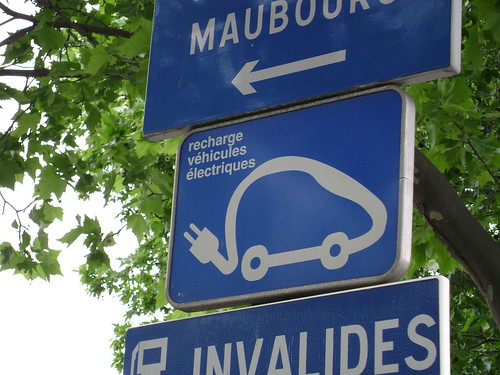 The 2009 Zero X is so green that you can eat its battery. Luckily its performance is more appetizing; it’s the fastest electric dirt bike ever.
The 2009 Zero X is so green that you can eat its battery. Luckily its performance is more appetizing; it’s the fastest electric dirt bike ever.
To read the article, visit Jalopink.com
Excerpts from the review:
“What you end up getting is a package reminiscent of Colin Chapman’s ideology: small, light and very quick. Also similar to Lotus, The Zero X is considerably cheaper than its competitors. While the Quantya comes in at $10K, the Zero X is $7,750 shipped to your door if you live in the Continental US, with an extra $700 for six-day airmail to Europe.
So how does the Zero X compare to an old-timey gasoline-powered bike? A gas motor is only about 25% efficient, the Zero X’s motor, with its single moving part, is about 95%. The battery itself puts out 300 watts, enough to vaporize a wrench if it’s electrocuted. When asked about the whole electricity-isn’t-really-green issue, CEO Gene Banman said, “Yes, burning coal to charge an electric motorcycle creates a carbon footprint, but burning gasoline is much more inefficient. The Coal/Electric motorcycle is 5x better than gasoline. The American grid with its natural gas, hydro and nuclear makes the electric motorcycle 8x better. Then as green energy sources come on line, the electric motorcycle becomes a true zero carbon solution.”
The charge time on the battery is around 2 hours. Zero has made the battery a modular unit that can be pulled in less than a minute and replaced. While long distance riding is out of the question, Neal Saiki made it clear that the X is a continually evolving machine “for enthusiasts who like motorcycles, and somebody who wants to ride and not piss off their neighbors.” In an era of ever-increasing restrictions coupled with decreasingly available land, that’s not just a sales pitch. With the Zero I could be blasting down the streets, terrorizing small animals and kids in a noise-ordinanced, gated-community and nobody would know.
The track here at Glen Helen is rough thanks to nearly a week of heavy rains that stopped the day before, but the Zero handles it pretty well. The speed is explosive, which means really going fast at a rate I’m not ready for thanks to the 50 lb-ft of torque available instantly with just a twist of the throttle. I get myself into trouble when I forget the Zero X isn’t designed to handle the tortures of an MX track famous for destroying even the most rugged machines. That ultra-light suspension is bottoming out on the landings as well as the stutters that have contracted and broken into huge chunks.
The X is designed for single-track trails, not 100 ft descents with giant ruts. And while I could complain about lack of confidence because the bike’s dynamics are so foreign, there’s this one nagging advantage – I can hear everything. I don’t have to wear plugs to keep my ears from bleeding. In fact, the loudest noise the bike makes is when the brakes squeal as I jam the rear to keep from rocketing off a ridge.
Is the X going to outperform heavier, more robust dedicated Motocross bikes on their home turf? No. But it can offer fast off-road thrills free of both emissions and noise better than any other electric dirt bike yet designed. It’s lighter and more accessible than traditional dirt bikes too. View it as a direct replacement for gas-powered bikes and you’ll be disappointed, but view it as a very fun, genuinely fast indication of their future and you’ll be excited. We are.
Read more about the business and technology behind the Zero X at Fast Company.
Text and photography: Grant Ray





 The
The 






